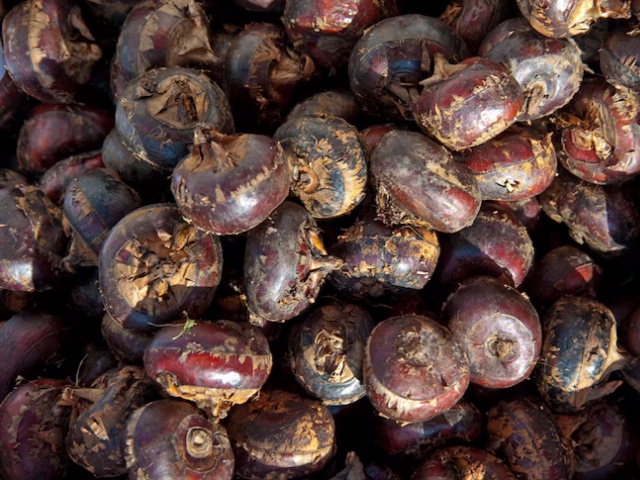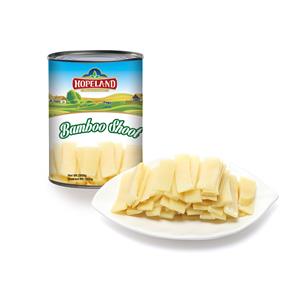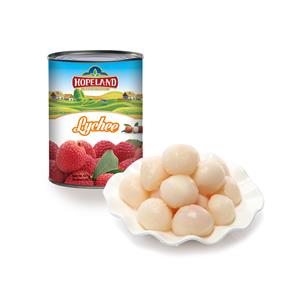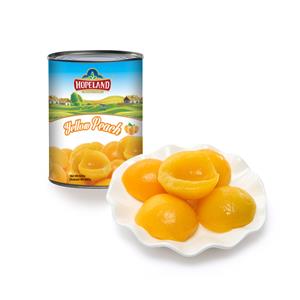From Sweet Corn to Water Chestnuts — The Changing Seasons of Canned Food Production
Every year, the rhythm of the canning industry follows the rhythm of nature. As the fields turn golden and the air cools, one production season gently gives way to another. In our factory, the sweet corn canning season is now drawing to a close. The bright kernels that filled our lines and storage tanks for the past few months are giving their final run. Soon, the spotlight will shift to another seasonal treasure — the water chestnut. Around November 20, the production of canned water chestnuts will begin, bringing a new energy and aroma to the workshop floor.
This transition is more than just a change of ingredients; it’s a story about timing, harvest cycles, and the skill of balancing freshness with quality. Let’s take a closer look at how the corn season ends, how the water chestnut season begins, and why both hold a special place in the world of canned foods.
1. The Final Weeks of Sweet Corn Season
The sweet corn harvest usually peaks in late summer through early autumn. For months, the canning lines are busy from morning to night — receiving freshly harvested corn, husking, cutting kernels, blanching, and sealing them in bright yellow cans that preserve their natural sweetness.
As we move into November, the yield of tender corn starts to decline. The plants, which thrived under the warm sun, begin to lose moisture as temperatures drop. The sugar-to-starch ratio shifts, and the kernels become firmer and less sweet — a clear signal that the season is ending.
In the factory, the final batches are carefully monitored to ensure they meet the same high standards of color, taste, and texture. The production teams run thorough quality checks to ensure that every can reflects our brand’s promise: fresh taste, consistent quality, and safe preservation.
When the last truckload of fresh corn arrives, there’s a mix of pride and nostalgia in the air. The team knows that months of hard work have produced thousands of cartons that will soon reach tables around the world. Canned corn will continue to brighten meals in soups, salads, and stir-fries — long after the fields have gone bare.
2. Preparing for the Next Season: Water Chestnuts
Just as the corn season closes, another one is waiting to begin. Water chestnuts, known for their crisp texture and refreshing sweetness, are harvested in late autumn and early winter — typically from mid-November onward.
The timing is perfect: as the corn lines are cleaned, serviced, and shut down, the preparation for water chestnut processing begins. The machinery must be thoroughly sanitized and reconfigured, because the two products have completely different processing requirements.
Corn requires blanching and quick sealing to maintain its sweetness.
Water chestnuts, on the other hand, need peeling, trimming, and soaking to retain their crunch and color.
These two products represent two faces of the canning industry — one golden and soft, the other white and crisp.
3. The Delicate Art of Water Chestnut Processing
Water chestnuts are unique among vegetables. They grow underwater, in muddy fields, encased in a thick, dark-brown shell. Beneath that rough exterior lies a pure, white bulb that stays crunchy even after cooking. This is why they are so popular in Asian cuisine — whether stir-fried with vegetables, added to dumpling fillings, or used in desserts.
The production process for canned water chestnuts is both labor-intensive and highly technical:
Harvesting: Farmers pull the plants from ponds and separate the bulbs carefully to avoid breaking the skin.
Sorting: Only uniform, mature bulbs are selected for canning.
Peeling: The thick shell is removed using both mechanical and manual techniques.
Washing and soaking: The peeled bulbs are soaked in clean water to remove any remaining mud and tannins.
Cutting (if required): Some are sliced or diced according to customer specifications.
Blanching: This step locks in the crispness and ensures food safety.
Canning and sealing: The chestnuts are filled into cans with pure water or brine, then vacuum-sealed.
Sterilization: High-temperature sterilization ensures the product remains shelf-stable for years.
Each step demands precision and hygiene. The goal is to preserve the water chestnut’s natural crunch and fresh sweetness, even after months on the shelf.
4. The Seasonal Logic Behind Canning
At first glance, one might wonder why the production shifts so sharply between products. The answer lies in agricultural reality. Unlike factories that can operate year-round with synthetic materials, food production depends entirely on harvest seasons.
Canning is about capturing freshness at its peak. Once the raw material reaches its best stage — whether it’s corn, peas, bamboo shoots, or water chestnuts — factories must move quickly to process it before quality declines.
That’s why the calendar is so crucial. Every product has its own window:
Sweet corn: August to early November
Water chestnuts: Late November to January
Bamboo shoots: Spring
Mushrooms and beans: Year-round, depending on variety
By following these natural rhythms, canneries like ours ensure that every product is made from the freshest possible ingredients. It’s a sustainable and efficient system that respects both the land and the market.
5. Cleaning, Maintenance, and Line Adjustment
The short pause between corn and water chestnut seasons is far from a vacation. It’s a time of intense preparation. The production lines must be completely cleaned, inspected, and adjusted for the new product.
Tanks and pipes are flushed with high-pressure water and food-grade disinfectants.
Cutting machines are recalibrated.
Workers receive briefings and training sessions on new procedures and safety measures.
This transition process reflects the discipline of modern food manufacturing. Every small detail — from water temperature to sealing pressure — must be fine-tuned for the next product to ensure safety, consistency, and efficiency.
6. Meeting Market Demand Year-Round
For international buyers and distributors, these seasonal transitions are key to planning inventory. Knowing when each product is in production helps ensure continuous supply.
Before November: Focus is on sweet corn, mixed vegetables, and peas.
From late November onward: Water chestnut production begins, followed by bamboo shoots early next year.
Our export partners often schedule orders months in advance to secure priority in the production queue. This way, they can maintain steady stock even as product types change with the seasons.
Thanks to advanced cold storage and efficient logistics, customers around the world can enjoy seasonal produce anytime — from a bowl of corn chowder in winter to a refreshing water chestnut dessert in summer.
7. Why Water Chestnuts Are Special
Among all seasonal canned vegetables, water chestnuts stand out for their texture and versatility. While most vegetables soften when cooked, water chestnuts remain pleasantly crunchy. That’s why they’re widely used in Chinese, Thai, and Vietnamese cuisines — adding a crisp contrast to stir-fries, dumplings, and even sweet soups.
Nutritionally, water chestnuts are low in calories but high in fiber, potassium, and antioxidants. They help promote hydration, support digestion, and add a refreshing bite to many dishes.
In canned form, they are convenient, ready to use, and have a long shelf life. The flavor is mild and slightly sweet, making them adaptable for both savory and dessert recipes.
8. The Role of Experience and Precision
At the heart of this transition lies one core skill: experience. Managing seasonal production requires deep knowledge — not only of equipment and processes, but also of raw materials and their natural behavior.
Corn must be processed quickly after harvest to preserve sweetness. Water chestnuts, by contrast, must be handled gently to prevent cracking or discoloration. These details come only from years of hands-on practice.
Our production team has mastered this balance through over 15 years of continuous operation. Each season adds new lessons about timing, temperature, and teamwork. This accumulated experience ensures that both canned corn and canned water chestnuts meet the highest international standards.
9. Sustainability and Waste Reduction
The seasonal model also supports sustainability. By aligning production with harvest cycles, waste is minimized — raw materials are used when they’re freshest, reducing spoilage.
Even by-products like corn husks and chestnut shells are repurposed:
Corn husks become animal feed or compost.
Water chestnut shells are processed into organic fertilizer.
This circular approach helps reduce environmental impact and supports local farming communities, creating a win-win relationship between agriculture and manufacturing.
10. Looking Ahead: The Promise of the New Season
As the factory shifts gears, there’s a feeling of anticipation in the air. Workers who have spent months surrounded by golden kernels are now preparing for a sea of white, glossy bulbs. The aroma in the workshop will change — from the warm sweetness of corn to the clean, earthy freshness of water chestnuts.
By around November 20, the lines will start humming again, and cans of crisp, ivory-white water chestnuts will begin rolling off the conveyor belts.
These will soon make their way to customers in Asia, Europe, and North America — ensuring that households and restaurants everywhere can enjoy the unique taste and texture of this traditional ingredient.
11. A Year in the Life of a Cannery
If you trace the entire year in our factory, it forms a complete agricultural calendar:
Spring: Bamboo shoots and mushrooms
Summer: Sweet corn and peas
Autumn: Mixed vegetables and beans
Winter: Water chestnuts
Each season has its rhythm, challenges, and rewards. Together, they form a continuous cycle that keeps the factory alive and ensures that customers always have something fresh and seasonal to enjoy — no matter the month.
12. Conclusion: Seasons Change, Quality Remains
As we say farewell to the corn season and prepare to welcome the water chestnut harvest, one thing remains constant: our commitment to quality, safety, and taste.
Every can that leaves our factory carries the care of the farmers who grew the crops, the skill of the technicians who processed them, and the trust of customers who bring them to their tables.
The end of one season is never an ending — it’s a bridge to the next chapter of abundance. With sweet corn stored safely in warehouses and the first water chestnuts soon arriving at our gates, the cycle of freshness continues.
So, as November unfolds and the cool air sets in, we’re ready once again to celebrate the changing season — one can at a time.





